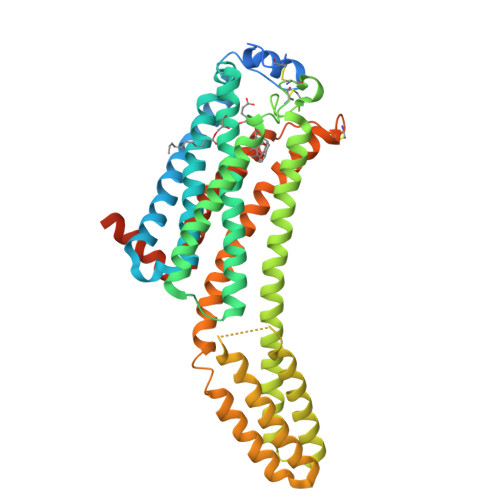Crystal Structure of Antagonist Bound Human Lysophosphatidic Acid Receptor 1.
Chrencik, J.E., Roth, C.B., Terakado, M., Kurata, H., Omi, R., Kihara, Y., Warshaviak, D., Nakade, S., Asmar-Rovira, G., Mileni, M., Mizuno, H., Griffith, M.T., Rodgers, C., Han, G.W., Velasquez, J., Chun, J., Stevens, R.C., Hanson, M.A.(2015) Cell 161: 1633-1643
- PubMed: 26091040
- DOI: https://doi.org/10.1016/j.cell.2015.06.002
- Primary Citation of Related Structures:
4Z34, 4Z35, 4Z36 - PubMed Abstract:
Lipid biology continues to emerge as an area of significant therapeutic interest, particularly as the result of an enhanced understanding of the wealth of signaling molecules with diverse physiological properties. This growth in knowledge is epitomized by lysophosphatidic acid (LPA), which functions through interactions with at least six cognate G protein-coupled receptors. Herein, we present three crystal structures of LPA1 in complex with antagonist tool compounds selected and designed through structural and stability analyses. Structural analysis combined with molecular dynamics identified a basis for ligand access to the LPA1 binding pocket from the extracellular space contrasting with the proposed access for the sphingosine 1-phosphate receptor. Characteristics of the LPA1 binding pocket raise the possibility of promiscuous ligand recognition of phosphorylated endocannabinoids. Cell-based assays confirmed this hypothesis, linking the distinct receptor systems through metabolically related ligands with potential functional and therapeutic implications for treatment of disease.
Organizational Affiliation:
Department of Structural Discovery, Receptos, San Diego, CA 92121, USA.


















